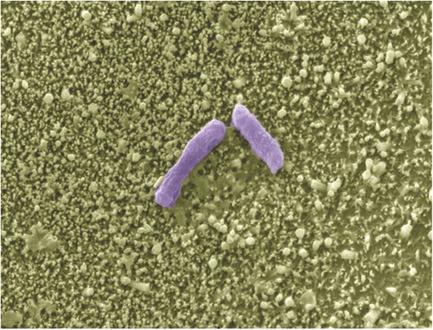当前位置:
X-MOL 学术
›
Adv. Funct. Mater.
›
论文详情
Our official English website, www.x-mol.net, welcomes your
feedback! (Note: you will need to create a separate account there.)
Novel Solid‐State Microbial Sensors Based on ZnO Nanorod Arrays
Advanced Functional Materials ( IF 18.5 ) Pub Date : 2018-03-12 , DOI: 10.1002/adfm.201706309 Cody J. Landry 1 , Fraser P. Burns 1 , Felix Baerlocher 2 , Khashayar Ghandi 1, 3
Advanced Functional Materials ( IF 18.5 ) Pub Date : 2018-03-12 , DOI: 10.1002/adfm.201706309 Cody J. Landry 1 , Fraser P. Burns 1 , Felix Baerlocher 2 , Khashayar Ghandi 1, 3
Affiliation

|
Gravity and magnetism are implemented to change the morphology of zinc oxide nanorod sensors during synthesis. The effects of gravity and magnetism can translate into future application of these nanorods through cost‐effective, environmentally friendly, and easy‐to‐use biosensor technology with the quickest available sensing. The sensors can pave the way toward detection of both bacteria and fungi present on the surface with high sensitivity. This ability to sense microorganisms in a “non‐solution‐based” environment represents a key step forward in the fields of health and food safety, as well as solid‐state nanomaterial biotechnology applications. Hundreds of thousands of people are affected each year by accidental contamination and current protocols are far from preventative. The results of the magnetic field studies when compared with previous results show that the following factors affect the outcome of applying magnetic field during the growth of nanorods on their morphology: the direction of growth with respect to gravity, the method of seeding, and the substrate.
中文翻译:

基于ZnO纳米棒阵列的新型固态微生物传感器
实现重力和磁性以在合成过程中改变氧化锌纳米棒传感器的形态。重力和磁力的影响可以通过具有成本效益,环境友好且易于使用的生物传感器技术以及最快的传感速度转化为这些纳米棒的未来应用。传感器可以为检测表面上存在的细菌和真菌提供高灵敏度的方法。这种在“非基于溶液”的环境中感知微生物的能力代表着健康和食品安全领域以及固态纳米材料生物技术应用领域迈出的关键一步。每年有数十万人受到意外污染的影响,而目前的协议远非预防性的。
更新日期:2018-03-12
中文翻译:

基于ZnO纳米棒阵列的新型固态微生物传感器
实现重力和磁性以在合成过程中改变氧化锌纳米棒传感器的形态。重力和磁力的影响可以通过具有成本效益,环境友好且易于使用的生物传感器技术以及最快的传感速度转化为这些纳米棒的未来应用。传感器可以为检测表面上存在的细菌和真菌提供高灵敏度的方法。这种在“非基于溶液”的环境中感知微生物的能力代表着健康和食品安全领域以及固态纳米材料生物技术应用领域迈出的关键一步。每年有数十万人受到意外污染的影响,而目前的协议远非预防性的。











































 京公网安备 11010802027423号
京公网安备 11010802027423号